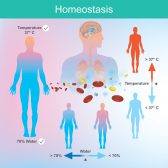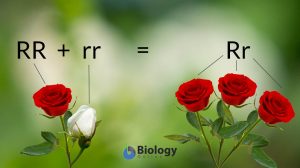Definition
noun
The hematopoiesis of lymphocytes
Supplement
Hematopoiesis is the process of forming new blood cellular elements in vertebrates. The process starts at the stem cells becoming committed progenitor cells that eventually develop into fully mature differentiated cells in blood. In humans, the cellular elements of the blood include red blood cells, white blood cells, and thrombocytes. These cells are all derived from the multipotent hematopoietic stem cells (HSCs), which can give rise to different blood cell types. Lymphopoiesis, in particular, is hematopoiesis that leads to the formation of lymphocytes. In this regard, below is the series of stages in lymphocytes:
(1) A hemocytoblast gives rise to common lymphoid progenitor cells (CLP).
(2) The CLP give rise to CFU-lymphocyte (i.e. the colony forming unit that leads to the formation of lymphocytes).
(3) The CFU-lymphocyte gives rise to lymphoblasts.
(4) The lymphoblasts develop into prolymphocytes.
(5) The prolymphocytes develop into lymphocytes.
The lymphocytes may be grouped into two: small and large lymphocytes. The small lymphocytes include B lymphocytes and T lymphocytes. The B lymphocytes are involved in the production of antibodies in the humoral immune response. The T lymphocytes participate in the cell-mediated immune response. The large lymphocytes include the natural killer cells, i.e. cells involved in the innate immune response of vertebrates.
Word origin: lymph + poiesis (“to make”)
Synonym(s):
- lymphocytopoiesis
See also:
Related form(s):
- lymphopoietic (adjective, of, pertaining to, or relating to lymphopoiesis)







